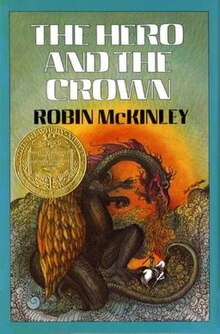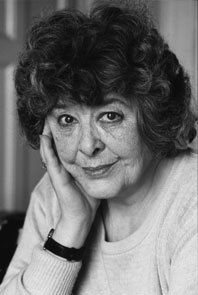
Diana Wynne Jones was a British novelist, poet, academic, literary critic, and short story writer. She principally wrote fantasy and speculative fiction novels for children and young adults. Although usually described as fantasy, some of her work also incorporates science fiction themes and elements of realism. Jones's work often explores themes of time travel and parallel or multiple universes. Some of her better-known works are the Chrestomanci series, the Dalemark series, the three Moving Castle novels, Dark Lord of Derkholm, and The Tough Guide to Fantasyland.

Children's fantasy is children's literature with fantasy elements: fantasy intended for young readers. It may also mean fantasy read by children, regardless of the intended audience.
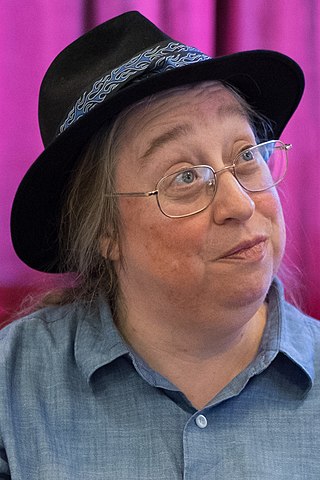
Jo Walton is a Welsh and Canadian fantasy and science fiction writer and poet. She is best known for the fantasy novel Among Others, which won the Hugo and Nebula Awards in 2012, and Tooth and Claw, a Victorian-era novel with dragons which won the World Fantasy Award in 2004. Other works by Walton include the Small Change series, in which she blends alternate history with the cozy mystery genre, comprising Farthing, Ha'penny and Half a Crown. Her fantasy novel Lifelode won the 2010 Mythopoeic Award, and her alternate history My Real Children received the 2015 Tiptree Award.

Margaret Astrid Lindholm Ogden, known by her pen names Robin Hobb and Megan Lindholm, is an American writer of speculative fiction. As Hobb, she is best known for her fantasy novels set in the Realm of the Elderlings, which comprise the Farseer, Liveship Traders and Tawny Man trilogies, the Rain Wild chronicles, and the Fitz and the Fool trilogy. Lindholm's writing includes the urban fantasy novel Wizard of the Pigeons and science fiction short stories, among other works. As of 2018, her fiction has been translated into 22 languages and sold more than 4 million copies.
Kate Elliott is the pen name of American fantasy and science fiction writer Alis A. Rasmussen.

Robin McKinley is an American author best known for her fantasy novels and fairy tale retellings. Her 1984 novel The Hero and the Crown won the Newbery Medal as the year's best new American children's book. In 2022, the Science Fiction and Fantasy Writers Association named her the 39th Damon Knight Memorial Grand Master in recognition of her significant contributions to the literature of science fiction and fantasy.

The Farseer trilogy is a series of fantasy novels by American author Robin Hobb, published from 1995 to 1997. It is often described as epic fantasy, and as a character-driven and introspective work. Set in and around the fictional realm of the Six Duchies, it tells the story of FitzChivalry Farseer, an illegitimate son of a prince who is trained as an assassin. Political machinations within the royal family threaten his life, and the kingdom is beset by naval raids. Fitz possesses two forms of magic: the telepathic Skill that runs in the royal line, and the socially despised Wit that enables bonding with animals. The series follows his life as he seeks to restore stability to the kingdom.
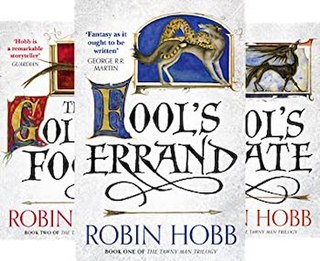
The Tawny Man trilogy is a series of novels by American author Robin Hobb, and the third trilogy in the Realm of the Elderlings sequence. Narrated in first person by FitzChivalry Farseer, it follows his life in his mid-thirties, and is set after the events of the Farseer Trilogy and the Liveship Traders.

The Blue Sword is a fantasy novel written by American author Robin McKinley. It follows Angharad "Harry" Crewe, a recently orphaned young woman, to a remote desert outpost in colonized Damar, where her brother is stationed in the Homeland military. When she meets Corlath, the mystical king of the Damarian Hillfolk, Harry discovers her own magical powers and a destiny that leads her to save Damar from invasion.

Spindle's End is a retelling of Sleeping Beauty by author Robin McKinley, published in 2000.

Wizard of the Pigeons is a 1986 fantasy novel set in Seattle by Megan Lindholm, and a forerunner of the urban fantasy genre. It was the first work to draw wider attention to Lindholm. The novel explores themes of homelessness, poverty, and mental illness. It was issued as a paperback original by Ace Books in 1986, and was reprinted in hardcover by Hypatia Press in 1994 and as a 35th Anniversary Edition by Grim Oak Press in 2020. Several UK editions have also been published.

The Last Herald-Mage is a trilogy of fantasy novels by American author Mercedes Lackey, published from 1989 to 1990. The story centers around a mage named Vanyel Ashkevron who lives in the fictional kingdom of Valdemar. It was the first high fantasy series with a gay protagonist from a mainstream publisher, and was well-received by critics, many of whom regard it as Lackey's best work.
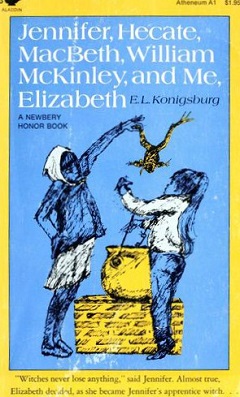
Jennifer, Hecate, Macbeth, William McKinley, and Me, Elizabeth is a children's novel by E. L. Konigsburg. It was published by Atheneum Books in 1967 and next year in the UK by Macmillan under the title Jennifer, Hecate, Macbeth and Me.

Fantasy is a genre of speculative fiction involving magical elements, typically set in a fictional universe and usually inspired by mythology or folklore. The term "fantasy" can also be used to describe a "work of this genre", usually literary.

The Rain Wild Chronicles is a quartet of fantasy novels by American author Robin Hobb, published from 2009 to 2013. It chronicles the re-emergence of dragons in the Rain Wilds, a setting in Hobb's fictional Realm of the Elderlings. It is her fourth series set in that world, following after the Farseer, Liveship Traders and Tawny Man trilogies, and features an entirely new cast of characters. The quartet features ecocentric themes, as it examines the reaction of humans to a new predator in the world.
Morgan Rice is an American author of fantasy and science fiction novels, with her books making the New York Times, USA Today, Apple Books, and other bestseller lists. Her first novel A Quest of Heroes was self-published in 2013 and was the first of 17 books in her epic fantasy series The Sorcerer's Ring.
Kelly Barnhill is an American author of children's literature, fantasy, and science fiction. Her novel The Girl Who Drank the Moon was awarded the 2017 Newbery Medal. Kirkus Reviews named When Women Were Dragons one of the best science fiction and fantasy books of 2022.

The Fitz and the Fool trilogy is the concluding subseries of the Realm of the Elderlings, a 16-book fantasy series by American author Robin Hobb. Published from 2014 to 2017, it features the protagonist FitzChivalry Farseer in his fifties, and follows his life with his wife Molly and daughter Bee Farseer. It was well-received by critics, with the Los Angeles Review of Books praising Hobb's characterization and portrayal of aging, and The Guardian positively viewing how the final book consolidated plot threads from across the series.
